Pond Care
The Japanese Stroll garden is laid out around two ponds that were created in 2008. They harbour aquatic plants and are surrounded by marginal plants such as candelabra primulas and Iris ensata: essential components of Japanese water gardens. During the summer, the air is filled with myriad damsel flies and dragon flies, and frogs and newts populate the water.
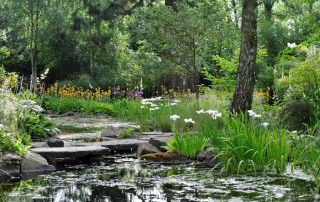
Incessant effort is needed to maintain the ponds’ appearance and water quality: During the warm months, single-celled (Chlamydomonas, Chlorella & Euglena sps.) as well as filamentous algae (Cladophora sps., the common blanket weed) proliferate and need to be kept under control. This is facilitated by adding barley straw extract (manufactured by ‘Just Green’) once a week from April to September. Algae growth is also reduced by oxygenating plants, such as pondweed (Potamogenton). For a healthy balance, about 50% of the water surface should be covered by plants.
Among our favourites ornamental aquatic plants are water hawthorn (Aponogeton distachyos) and water lilies (Nymphaea).
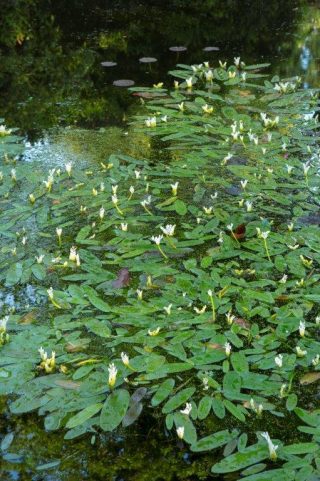
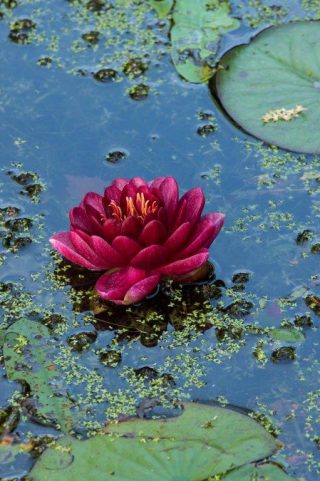
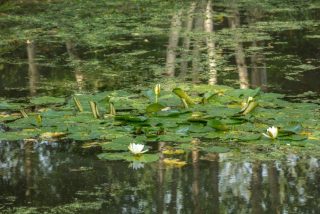
Water lilies and water hawthorn complement each other as the lilies flower from mid-summer onwards, while the scented white flowers of the water hawthorn bloom from March to May and, in mild conditions, during the autumn and sometimes even throughout the winter.
Despite their beneficial effect on the water quality, oxygenating plants need to be carefully managed: they grow as prolifically as the algae. It is therefore necessary to remove some of the plants every week, along with algae and leaves.
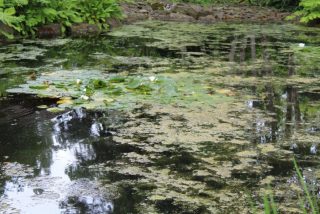
This task falls to our pond keeper, Ollie: Throughout the year, he diligently removes excess pondweed, algae and leaves from the pond using a net.
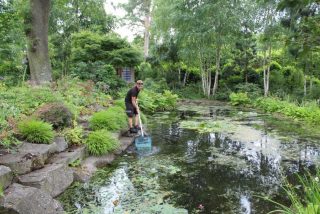
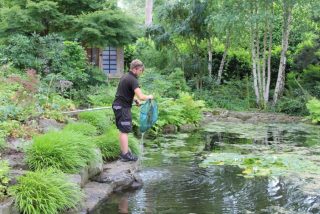
The plants and debris are left on the edge of the pond for 24 hours to allow insects and amphibians which have been fished out as ‘bycatch’ to move back to the safety of the water. After this period, the debris is put on the compost heap.
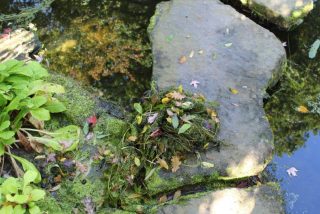
As important as removing excess and unwanted material from the pond is to keep precious components in: In April, large amounts of frogspawn are deposited along the edges of the pond. If left unprotected, the future frog population may be annihilated completely by visiting ducks. Therefore, the frogspawn is protected by netting.
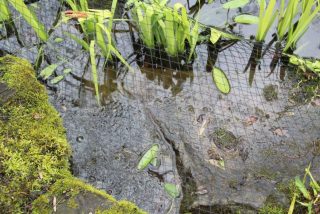
Around the pond, there never is a dull moment!
